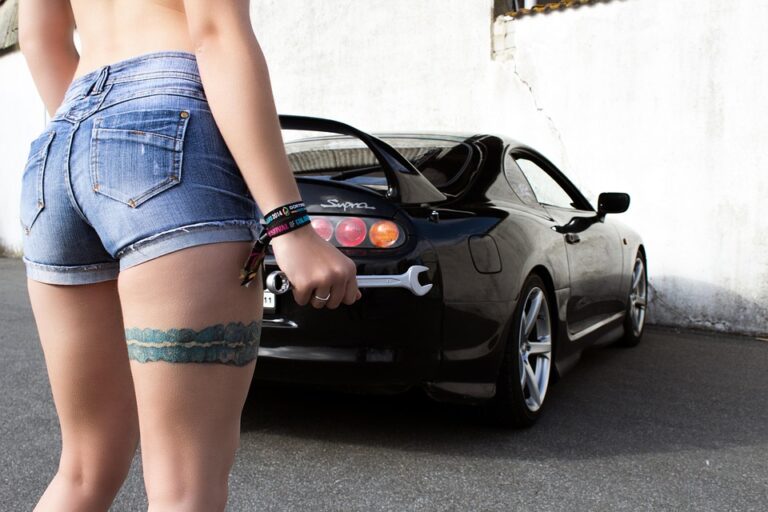Beyond the Dashboard: The Future of In-Car User Interfaces
As car technology continues to evolve rapidly, automotive manufacturers are redefining how we interact with vehicles. The dashboard, once the centerpiece of in-car experience, is transforming into a more integrated and flexible in-car user interface (UI). This shift not only enhances convenience but also introduces new ways for drivers and passengers to engage with their vehicles and the surrounding digital landscape.
The Evolution of In-Car Interfaces
From Analog to Digital
Early car dashboards were simplistic, featuring analog dials and gauges. Fast forward to the 21st century, and digital displays have taken precedence. Today’s vehicles are equipped with touchscreens, voice recognition, and even gesture controls, marking an extraordinary leap in car technology. These innovations have made it possible for drivers to access important information and control various functions without diverting their attention from the road.
The Rise of Connectivity
Modern vehicles are not just standalone machines; they increasingly integrate with smartphones and cloud services. Connectivity enables an array of features, from real-time navigation and traffic updates to music streaming and vehicle diagnostics. As applications become more sophisticated, the in-car UI emerges as a pivotal point for accessing these integral car technologies.
Key Features Driving Future In-Car UIs
Voice Assistants: A Hands-Free Solution
Voice recognition technology is revolutionizing in-car interfaces. Solutions like Apple CarPlay’s Siri and Android Auto’s Google Assistant allow drivers to navigate, send messages, and control music without taking their hands off the wheel. These systems are constantly improving, with better natural language processing and responsiveness, making voice activation a crucial component of modern car technology.
Augmented Reality (AR) Navigation
Imagine navigating your route with detailed AR graphics overlaying the real world. AR technology is starting to make its way into vehicle navigation systems. By projecting information directly onto the windshield, AR can offer dynamic route guidance, hazard alerts, and points of interest, all enriching the driver’s experience with valuable context.
Customizable Displays
A significant aspect of future in-car user interfaces will be personalization. Manufacturers are developing systems that allow drivers to customize their dashboard layouts, choosing which information is displayed prominently based on their driving habits and preferences. This trend toward personalization extends to themes, colors, and even ambient lighting, offering a tailored driving environment.
Gesture Control
As sensors become more sophisticated, gesture control is emerging as a new way to interact with in-car systems. Rather than touching screens or relying solely on voice commands, drivers will be able to perform simple hand gestures to adjust volume, change tracks, or modify climate settings. This technology minimizes distractions and keeps the focus on the road.
The Impact of AI on In-Car User Interfaces
Predictive Analytics
Artificial intelligence (AI) plays a significant role in shaping the future of in-car user interfaces. By analyzing driver behavior and preferences, AI can offer personalized suggestions and automate routines. For instance, if a driver often requires navigation home from work, the system might proactively suggest a route based on traffic conditions, enhancing convenience and efficiency.
Safety Enhancements
AI-driven systems can also improve safety by monitoring driving patterns and offering real-time feedback. Advanced driver-assistance systems (ADAS) utilize cameras and sensors to detect hazards and provide alerts, thereby enhancing overall road safety. The seamless integration of these technologies within the car UI can serve to augment driver awareness.
The User Experience: Prioritizing Intuitiveness
Simplifying Interactions
For a technology to be effective, it must be user-friendly. The future in-car user interfaces will prioritize simplicity and intuitiveness. Even complex functions should be easily accessible and manageable, ensuring that drivers can focus on the road rather than struggling with complicated controls.
Feedback Mechanisms
Incorporating feedback systems can vastly improve user experience. Haptic feedback, for instance, provides tactile responses when a control is adjusted, confirming the user’s action without requiring them to visually check the interface. By implementing such mechanisms, car technology will facilitate a more seamless interaction process.
Looking Ahead: What Will the Future Hold?
Integration with Smart Cities
In the years to come, in-car user interfaces will likely become intertwined with smart city technologies. Vehicles will communicate with infrastructure, optimizing routes based on real-time data about traffic, weather, and events. The advent of 5G technology will further enhance this connectivity, paving the way for innovations such as coordinated traffic lights and automated parking.
The Evolution of Electric Vehicles (EVs)
As electric vehicles gain traction, their in-car user interfaces will adopt features that cater specifically to battery management and energy efficiency. Drivers will have access to real-time energy consumption data and charging station locators integrated directly into their navigation systems, enhancing the overall driving experience.
Conclusion: Embracing a New Era of Car Technology
The future of in-car user interfaces is not merely an enhancement of the dashboard—it’s a holistic transformation in how we interact with our vehicles. As innovations like voice control, augmented reality, AI, and smart city integration materialize, the possibilities are nearly limitless. Embracing these advancements will not only lead to safer and more efficient driving experiences but will also deepen our relationship with the technology that powers our mobility. As we venture beyond the dashboard, it’s clear that the future of car technology is bright and full of promise.
For more insights into automotive innovations, check out our other articles on buzzo.live and stay updated on the latest trends in car technology!


